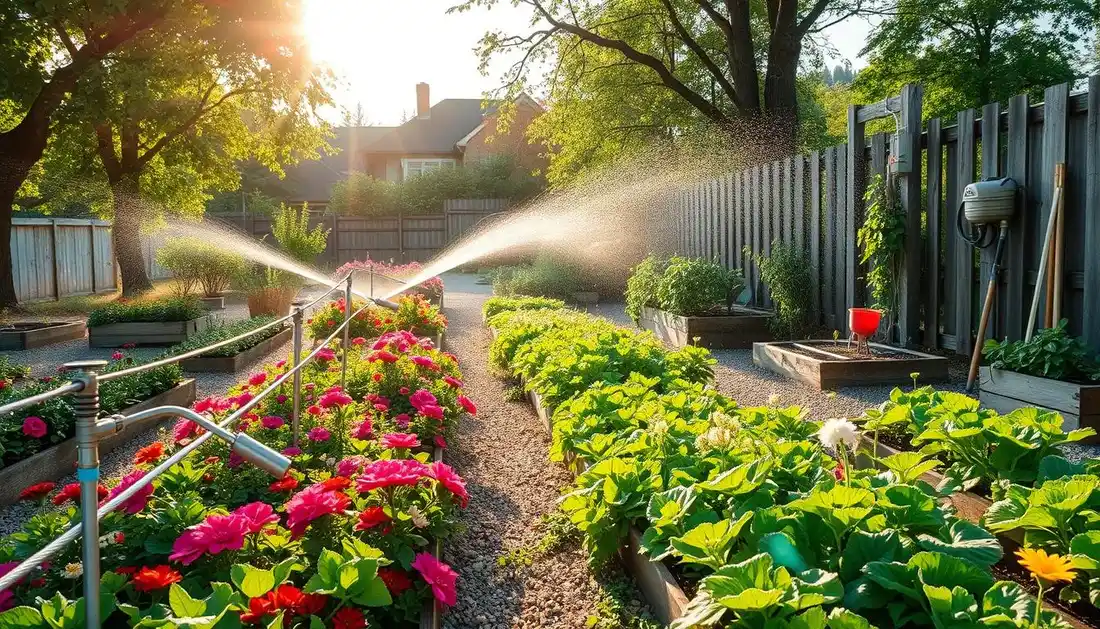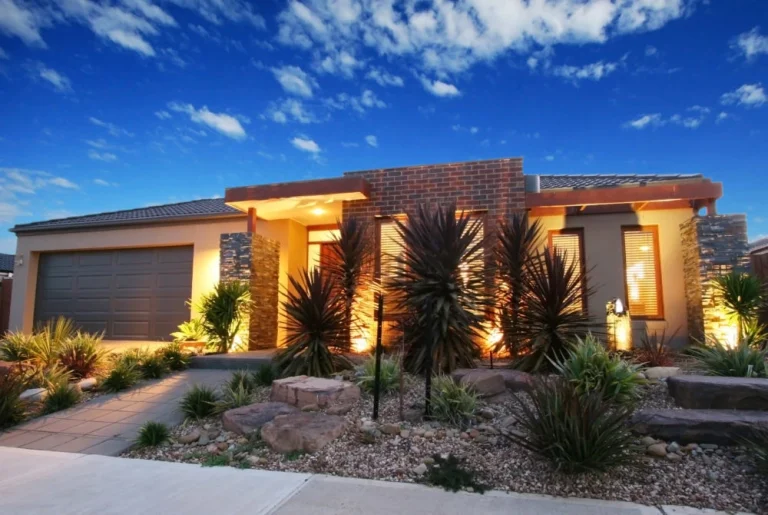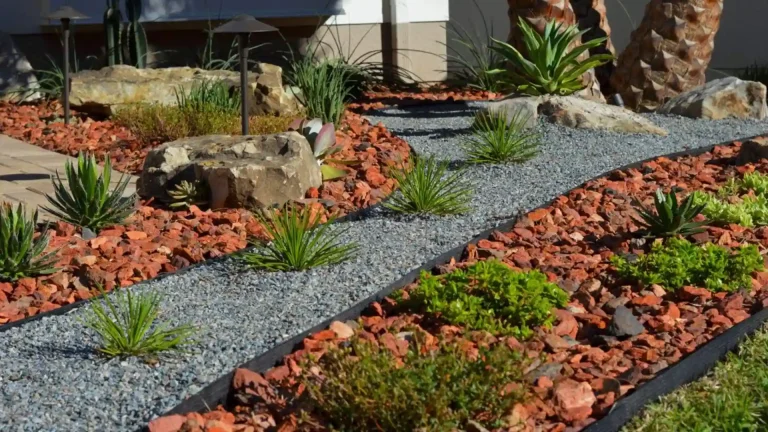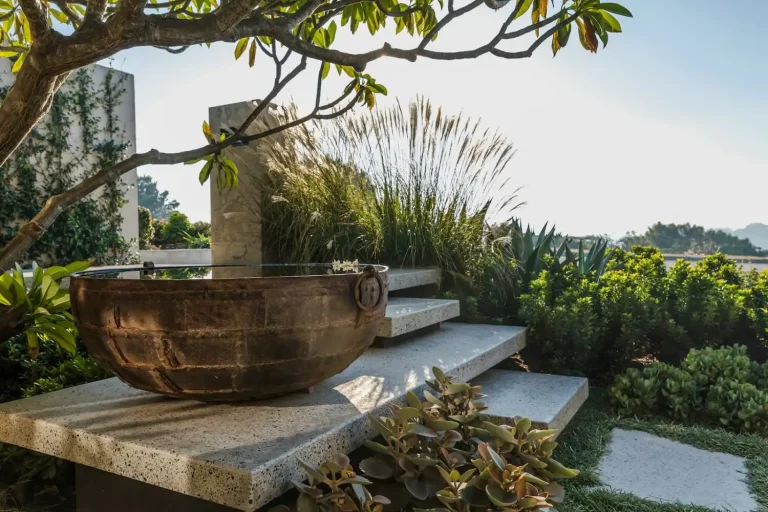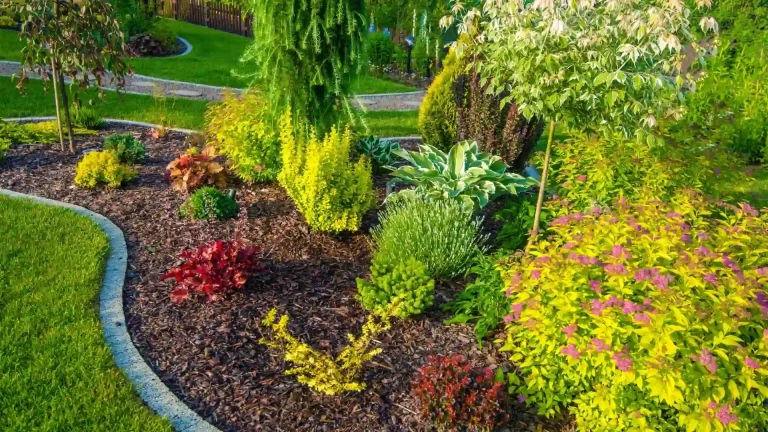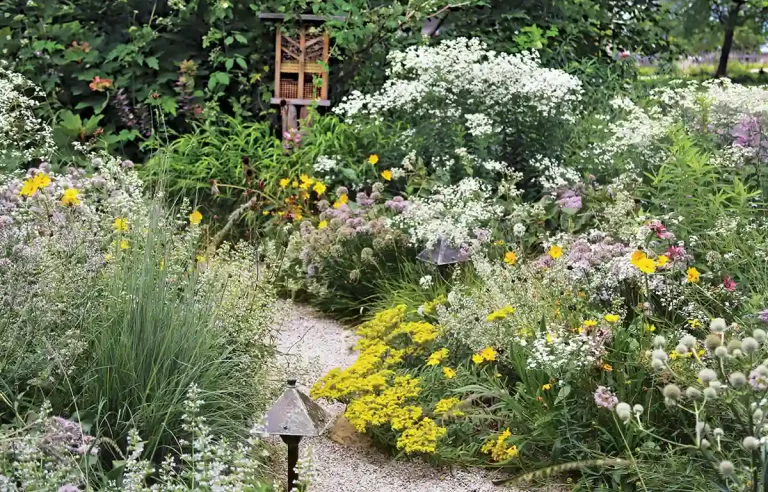Smart Water‑Wise Irrigation Systems: Top Picks, Benefits & How to Choose
Smart water‑wise irrigation systems merge automation, sensors, data, and irrigation hardware to deliver water precisely where and when plants need it. The “water‑wise” qualifier emphasizes conservation and efficiency, ensuring no drop is wasted.
Traditional irrigation operates by fixed times or manual routines. But weather changes, seasonal shifts, and microclimatic variation rarely align with fixed schedules. Smart systems bridge that gap. By integrating soil moisture sensors, weather data, and flow monitoring, smart controllers dynamically adjust watering. This results in significant water savings for many usersachievinge 30 % to 50 % reduction compared to conventional systems.
Beyond conservation, these systems promote healthier plants, reduce disease risk, lower maintenance demands, and often pay for themselves within a few seasons. In water-restricted areas, they also help maintain compliance with local watering restrictions.
As landscapes become more complex and climates more variable, a smart water‑wise system is not just a convenience, it’s a strategic asset.
Core Technologies Behind Smart Water‑Wise Systems
Understanding what powers smart irrigation helps you evaluate options and design the system you need.
Sensor Inputs: Soil Moisture, Rain, Flow & Climate Data
The intelligence of a smart system comes from sensing. Soil moisture sensors (capacitive, tensiometric, etc.) measure water content in the root zone. Rain or weather sensors intercept precipitation or forecasted rain. Flow meters or pressure sensors detect abnormal water usage (e.g., leaks or broken pipes). All of these data inputs serve as the “eyes and ears” of the system.
Controller Logic & Decision Making
Controllers (the “brain”) process sensor inputs, historical data, and scheduling rules to decide when and how long to irrigate each zone. Advanced systems may incorporate algorithms, machine learning, or artificial intelligence to optimize over time. For instance, an academic prototype uses an LSTM model to predict irrigation need based on collected sensor data.
These controllers can override fixed schedules, skip watering before rain, or trigger alerts when anomalies appear.
Actuation: Valves, Drip Lines, Sprinklers
Once the controller decides, it activates valves, opens drip lines, or runs sprinklers. High-quality systems use proportional solenoid valves to regulate flow precisely. The distribution hardware must match the controller’s design and sensor feedback for optimal performance.
Connectivity & Interface
Modern systems connect via WiFi, LoRa, Zigbee, or wired networks. Users view dashboards, adjust schedules, and receive alerts via web or mobile apps. Remote control and real-time feedback are key advantages over legacy timers.
Analytics & Reporting
Data is collected over time, including usage metrics, trends, and alerts. Robust interfaces let users track water savings, diagnose inefficiencies, and refine their schedules. Many controllers include logs, graphical summaries, and alert histories.
These elements together form a “smart water‑wise system” rather than a simple timer upgrade.
Key Benefits & Why They Matter
Smart water‑wise irrigation systems offer multiple layers of value. Below are core benefits with details and context.
Deep Water Conservation & Efficiency
Because smart systems water only when needed, verified by sensor data or weather, er they cut waste. They skip watering when the soil remains moist, pause during rain, or reduce runtime during cool or low-evapotranspiration periods. This efficient response saves large volumes of water annually.
This reduction is critical in regions facing drought or where water utility costs are rising.
Cost Savings & Return on Investment
Lower water usage means lower utility bills. Many users recoup the system cost within 12 to 24 months, especially in larger landscapes where water costs and plant replacement risks are higher.
Further savings come from reduced maintenance, less pipe stress, fewer leaks, and earlier detection of issues before they escalate.
Improved Plant Health & Landscape Quality
Precision watering helps plants maintain optimal soil moisture, neither water-stressed nor oversaturated. That encourages deeper root growth and more resilient specimens.
By avoiding wet foliage and overwatering, smart systems reduce disease pressure (fungal, pathogen) and root rot. They help maintain consistent moisture without drastic swings.
Automation, Time Savings & Peace of Mind
Manual irrigation demands constant adjustment and oversight. Smart systems let you set schedules and let the system adapt. You can monitor and override remotely.
Alerts and notifications inform you of possible leaks, broken zones, or irregular flows, helping catch issues early.
Environmental & Compliance Benefits
Smart systems minimize runoff (which can carry fertilizers or pollutants), reduce water demand on municipal systems, and lower the energy used in pumping.
Many jurisdictions offer rebates or require adherence to watering restrictions. Smart systems can automatically comply with local watering rules, avoiding fines.
Real Product Examples of Smart Water‑Wise Irrigation Systems
Here are five real-world smart water-wise irrigation products. For each, I describe features, benefits, use cases, and where/how to acquire (affiliate-style guidance).
1. Rain Bird arc6 Smart Irrigation Controller
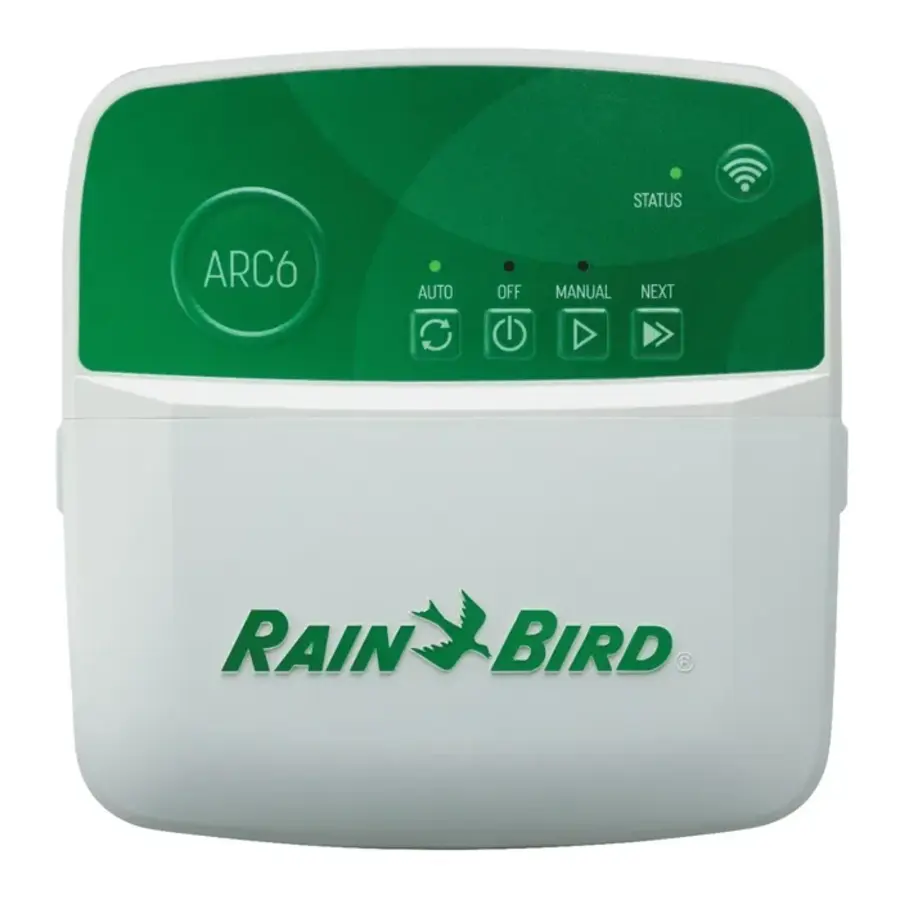
Rain Bird arc6 Smart Irrigation Controller is a WiFi-enabled controller that supports around 6 zones, with smart scheduling features and remote control.
Key Features & Benefits:
-
Compact 6-zone support, suitable for medium gardens.
-
Weather-based adjustments via connected data.
-
Remote management through an app.
-
Compatible with Rain Bird accessories (sensors, valves).
Use Case / Problem Solved:
If you have a mid-sized yard or segmented garden beds with varying needs, this controller adds intelligence without overkill. It lets you override cycles when rainy or holiday periods occur, preventing waste.
Where to Buy / How to Buy:
Use the product name link to view sellers. Installers or irrigation specialists might stock it locally; checking local Rain Bird distributors is wise.
2. Inkbird Wifi Smart Irrigation Controller (8‑Zone)
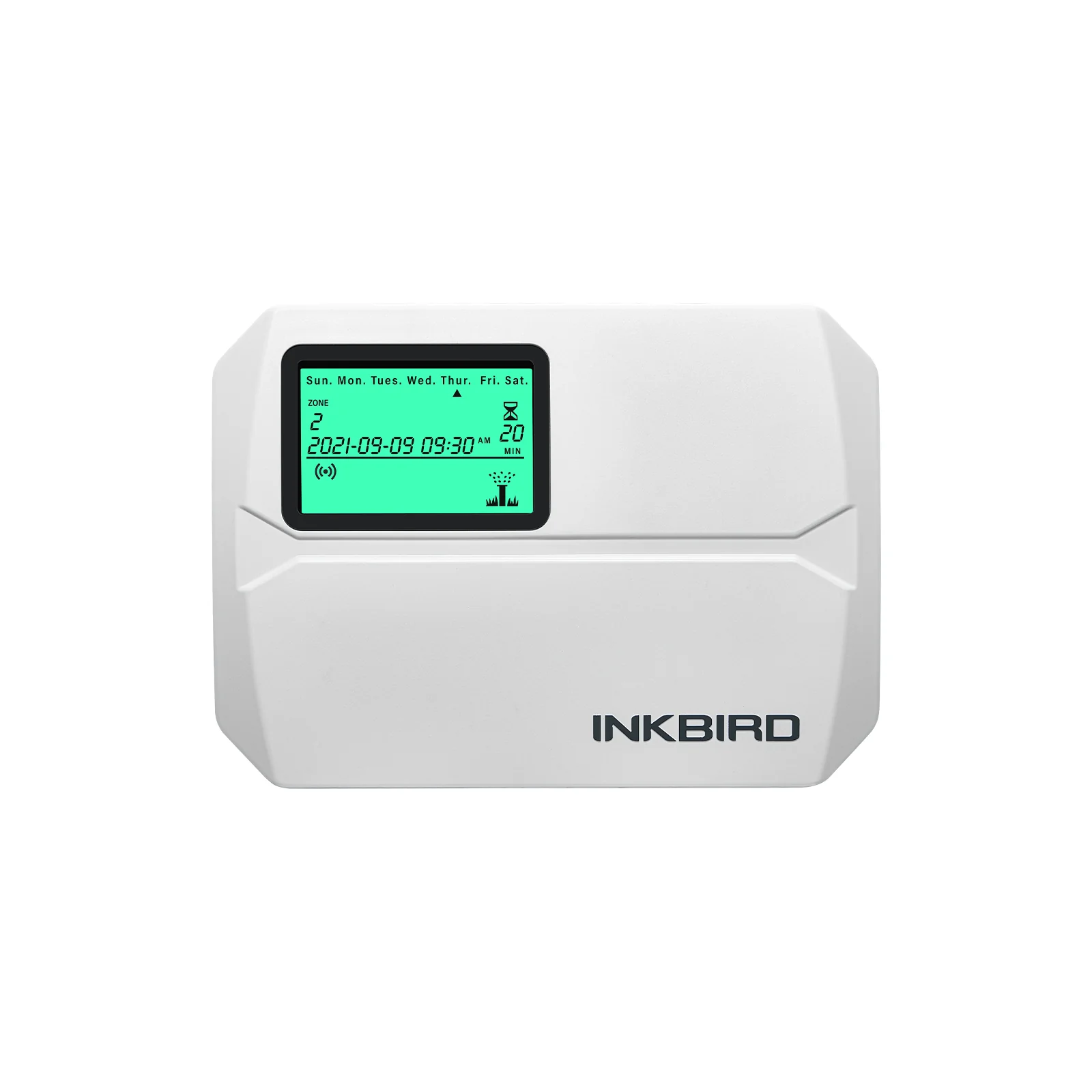
Inkbird Wifi Smart Irrigation Controller is an 8-zone controller with WiFi connectivity and app-based control.
Features & Benefits:
-
Supports up to 8 zones, adequate for many residential landscapes.
-
Scheduling, override, and remote start/stop via app.
-
Integrates with sensor inputs.
-
Cost-effective compared to higher-end controllers.
Use Case / Problem Solved:
For garden owners wanting smart control without oversizing, this provides a good balance. It’s ideal for landscapes with lawn, flower beds, shrubs, and small pots needing discrete scheduling. When rain is forecast, you can pause irrigation from your phone.
Where to Buy / How to Buy:
Search the full product name to compare sellers. Ensure wiring compatibility and check support for local voltage or plumbing.
3. Hydro‑Rain 04082 16‑Station WiFi Smart Controller
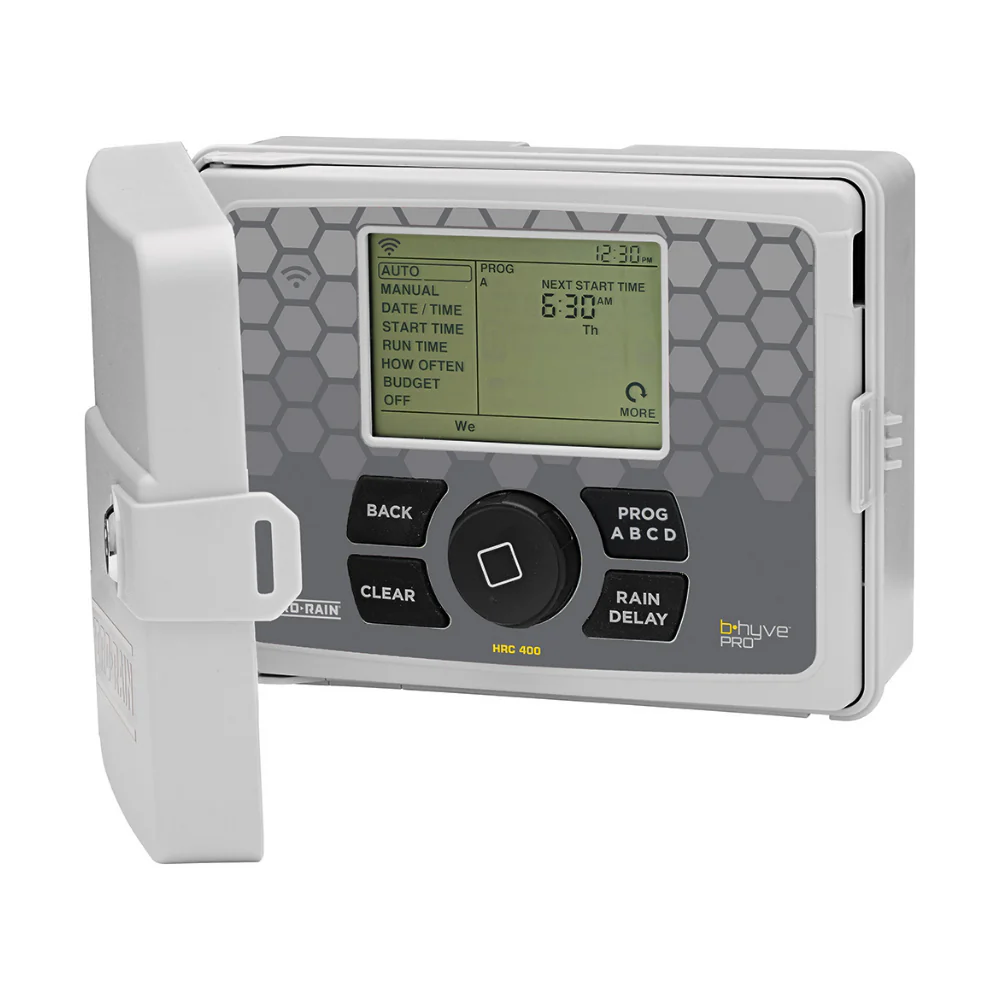
Hydro‑Rain 04082 16‑Station WiFi Smart Controller is a powerful 16-zone controller for large or subdivided properties, with WiFi and advanced logic.
Features & Benefits:
-
Handles up to 16 independent zones.
-
Supports complex schedules, cycles, and sensor integration.
-
WiFi access and remote control.
-
Expandable and robust for commercial or large estate use.
Use Case / Problem Solved:
Large gardens, estates, golf-course edges, or properties with varied landscape zones (lawns, shrubs, hardscape) can centralize control in one unit. Without it, you’d need multiple separate controllers or manual overrides.
Where to Buy / How to Buy:
Available via industrial or irrigation suppliers. For high-capacity properties, it’s often worth buying through irrigation wholesalers or local distributors that can advise on wiring and integration.
4. Diivoo DI‑WT07W Smart Water Timer
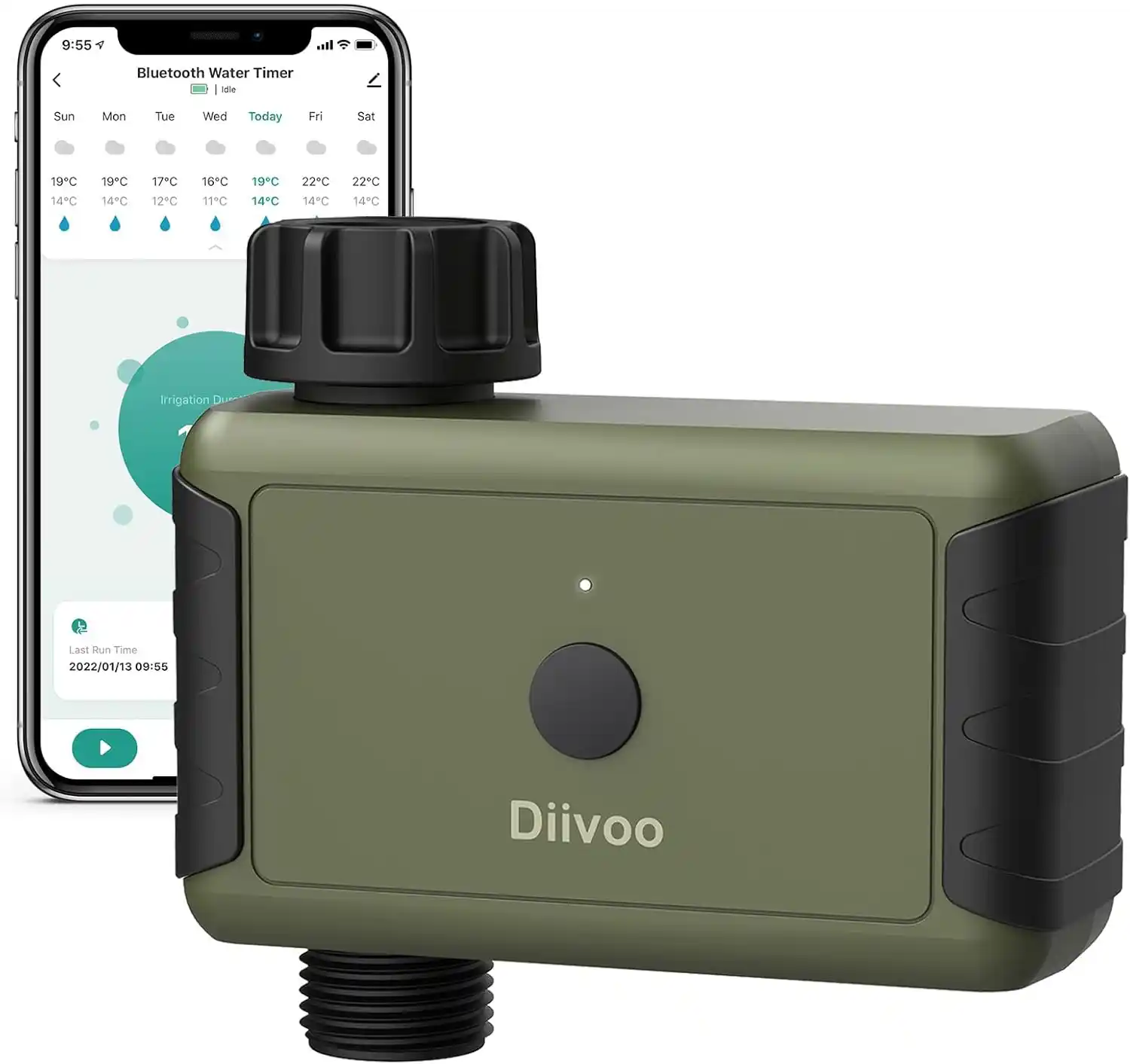
Diivoo DI‑WT07W Smart Water Timer is a single-valve smart water timer compatible with app control, designed to retrofit existing systems.
Features & Benefits:
-
Converts a regular irrigation zone into a smart-controlled one.
-
Works with Smart Life / Tuya ecosystems.
-
Lightweight and easy to install.
-
App control, scheduling, and override.
Use Case / Problem Solved:
If you already have a zone you’d like to make “smart” without replacing your full system, this device is ideal. For example, convert a pot irrigation zone, greenhouse, or drip loop using this timer while leaving your main controller intact.
Where to Buy / How to Buy:
Search “Diivoo DI‑WT07W” in your local marketplace. Confirm compatibility with your existing plumbing and voltage.
5. Smart Wireless Irrigation Controller (with soil sensor)
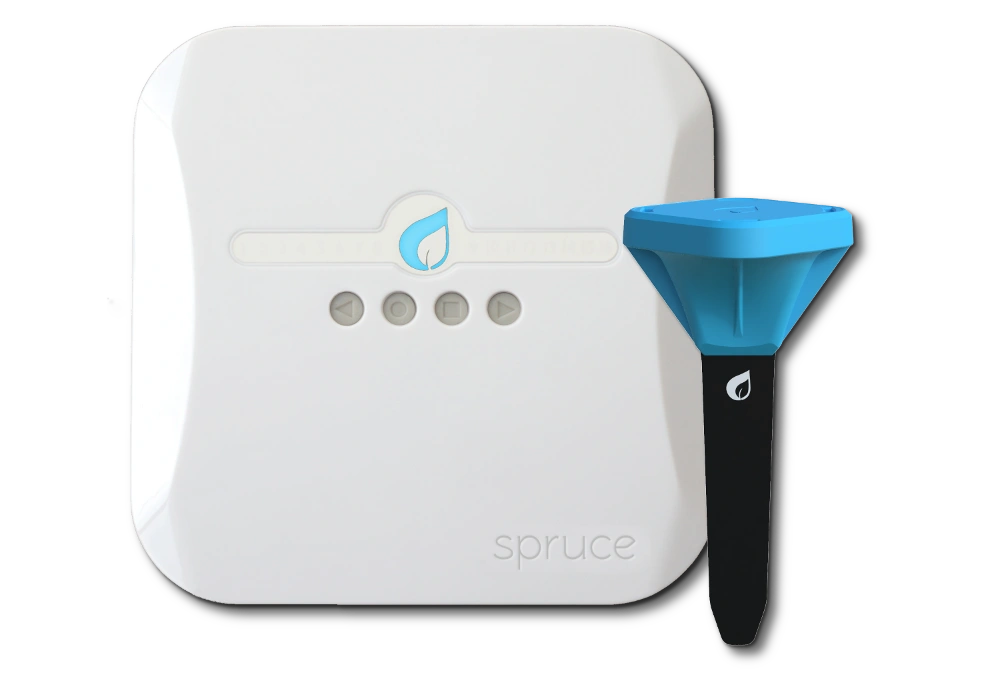
Smart Wireless Irrigation Controller by Spruce is a controller that includes or supports a soil sensor with h waterproof build and wireless features.
Features & Benefits:
-
Includes or works with an integrated soil moisture sensor.
-
Wireless scheduling, remote control.
-
Compact and suited for small gardens or beds.
-
Energy-efficient and weatherproof.
Use Case / Problem Solved:
Great for raised beds, small plots, or zones where precision is critical (vegetable beds, specialty plant beds). Instead of watering uniformly, you can water based on actual soil moisture. Reduces overwatering risk.
Where to Buy / How to Buy:
Check local smart gardening retailers or online stores. Use the product name link to view merchant listings. Ensure the soil sensor compatibility and distance from the controller.
How to Design & Deploy a Smart Water‑Wise System
A well-designed system is more reliable, efficient, and easier to maintain. Below is a workflow and best-practice guidance.
Landscape Assessment & Zone Mapping
Start by dividing your property into distinct irrigation zones—based on soil type, sun exposure, plant type, slope, and microclimates. Each zone should have relatively uniform water requirements.
Map these zones and note existing valves, pipe layout, and pressure zones.
Controller Selection & Sizing
Choose a controller that accommodates your zone count (plus future growth). For a small garden, a 6–8 zone unit may suffice; for larger landscapes, go for 16 zones or modular expandability.
Ensure the controller supports sensor inputs (rain, flow, soil moisture), remote connectivity, and override capabilities.
Sensor Placement & Integration
Place soil moisture sensors in representative locations of each zone, not too close to emitters. Rain or weather sensors should be placed in open areas free from obstructions. If using a flow meter, install it in the main supply line before zone splits.
Configure threshold values for moisture dryness or flow anomalies to trigger actions or alerts.
Wiring, Valves & Actuation
Connect valve wiring carefully—pay attention to wire gauge and distance. Use proportional or solenoid valves compatible with your controller. Ensure proper backflow prevention and pressure regulation.
Ensure drip lines or sprinklers correspond to the controller’s runtime logic and sensor feedback.
Programming & Scheduling Logic
After wiring, program the initial schedules:
-
Set baseline runtimes (minimally) based on historical watering needs.
-
Enable skip or suspend rules when rain is detected.
-
Use “cycle and soak” logic to avoid runoff on slopes or sandy soils.
-
Set sensor thresholds for automated behavior (e.g., skip watering if soil moisture is above 30 %).
-
For seasonal changes, use adjustment factors (e.g. +20 % in summer, 30 % in cooler months).
Allow the system to run for 1–2 weeks under supervision to collect data.
Monitoring & Refinement
Use system dashboards to monitor water usage, alerts, and trends. Look for zones that consistently underperform or overwater. Adjust thresholds, runtimes, or sensor placements as needed.
Conduct periodic physical checks (valves, emitters, sensor drift) and calibration.
Maintenance & Upgrades
-
Clean and calibrate sensors periodically.
-
Check valve wiring and insulation.
-
Flush drip lines or sprinkler circuits yearly.
-
Replace aging valves or controllers as technology improves.
-
Add new zones, sensors, or expansion modules as landscape changes.
Over time, you’ll “teach” your system how your landscape behaves, allowing it to water more precisely and autonomously.
Use Cases & Problem‑Solving Stories
Scenario: Hot Season Overwatering
In a garden during hot months, the fixed-schedule timer runs daily regardless of recent rainfall or humidity. Plants suffer from occasional root rot or shallow root growth due to overwatering. A smart controller with rain sensing automatically skips scheduled watering if enough rain has already occurred, thus preventing over-saturation and pathogen risks.
Scenario: Leak or Broken Tube
An underground drip line develops a leak. The flow sensor detects abnormal usage and sends an alert. The system shuts down the zone automatically, preventing further water loss. The homeowner receives an alert and can fix the leak rapidly.
Scenario: Differing Plant Water Needs
A landscape has lawn, shrubs, and drought-tolerant plants. Each has distinct irrigation needs. By zoning and assigning sensor-based logic, the smart system waters each zone differently. Lawn zones may run early morning, shrubs get drip cycles, and drought-tolerant zones rarely run unless soil moisture is very low.
Scenario: Vacation & Remote Oversight
The homeowner is away for two weeks. Traditional systems run blindly and risk wasting water or neglecting zones. A smart system can be monitored and adjusted remotely via app; if unexpected rain or dry spells occur, the owner or caretaker can override schedules or let the system adapt.
Scenario: Large Property Management
In a large estate or HOA community, dozens of zones must be managed. Using a central smart controller (like the 16-zone example above) reduces the need for multiple manual timers. Consolidated dashboards, alerts, and usage data simplify management and prevent inconsistency across zones.
These scenarios show how smart water-wise systems address real landscape challenges.
Choosing the Right System & Buying Tips
Match System to Scale & Zones
Don’t oversize unnecessarily, but leave expansion margin (e.g., 20–30 % more zones than the current count). If your garden may grow, modular or expandable options are best.
Sensor Support & Inputs
Ensure the controller supports the sensors you need (soil moisture, rain, flow). Controllers without sensor support are less adaptable.
Connectivity & Interface Quality
A smooth app and responsive UI matter. Some systems have limited or clunky software. Read reviews and try demo apps before purchase.
Local Support & Parts Availability
Check whether your country or region has warranty support, spare parts, and distributors. Importing electronics may lead to delays or compatibility issues.
Voltage, Plumbing & Compatibility
Controllers often require specific power input (e.g., 24 VAC). Ensure your plumbing valve sizes and pressure match the controller’s specifications.
Rebates & Incentives
Many municipalities or water districts offer rebates for installing smart irrigation systems. Factor that into your ROI.
Installation vs DIY
If you’re comfortable with wiring, valves, and sensor placement, many systems are installable by savvy homeowners. However, for large or complex setups, professional installers may ensure optimal design and sensor calibration.
By evaluating these factors, you can choose a system that fits your landscape, budget, and operational expectations.
Implementation Checklist (Summary)
-
Map zones by plant type, sun/shade, slope, and soil.
-
Choose a controller with adequate zones and sensor support.
-
Plan sensor placement and valve wiring.
-
Install valves, actuators, and wiring according to design.
-
Program base schedules and sensor thresholds.
-
Monitor initial performance, adjust settings.
-
Maintain sensors, valves, and perform seasonal flushes.
-
Analyze usage data and refine over months.
This phased approach minimizes mistakes and allows learning.
Frequently Asked Questions
Q1: Can a smart water‑wise system work without soil moisture sensors?
A1: Yes, in a limited way. Such systems can still adjust to weather data or skip watering when rain is forecast. But lacking real-time soil feedback means you lose some precision and may under- or overwater in edge cases.
Q2: How long does it take to recoup the cost of a smart irrigation system?
A2: Typically 12 to 24 months, depending on property size, water rates, and the complexity of the system. Many users achieve ROI within one season if their landscape is sizable.
Q3: Can I retrofit an existing traditional irrigation system with a smart controller?
A3: Absolutely. Many smart controllers or smart timers (such as the Diivoo timer example) can integrate with existing valves and plumbing. You often only need to replace the timer/controller and add sensors, no major rework of pipework.
